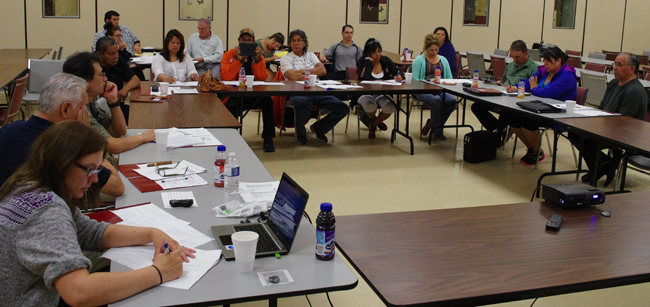First Nations need better mining jobs, opportunities to engage

By Rick Garrick
FORT WILLIAM FIRST NATION – Pic River’s Juanita Starr wants to see more First Nations people working in managerial positions in the mining industry.
“A lot of times they see labour jobs as important, but I also believe that getting jobs higher up in the company is good as well, whether it be a superintendent, a supervisor or a community liaison,” says Pic River’s government relations officer. “It’s good to see Aboriginal faces working their way up in the company.”
Starr says about 50 community members, including a community liaison and an Aboriginal relations person, are currently employed in the mining industry near Pic River, which is located near Marathon on the north shore of Lake Superior.
“It’s important for (youth) to see that schooling is important,” Starr says. “But seeing these higher jobs and shooting for (them) is important as well, especially with women.”
Starr brought up her concerns during the July 22 Union of Ontario Indians Mining Engagement Workshop at the Fort William First Nation Community Centre, one of a series of seven Mining Engagement workshops held July 22-24 by the UOI Lands and Resources, Inter-governmental Affairs and Anishinabek Nation Economic Development departments in the Robinson Superior communities of Fort William, Rocky Bay, Red Rock, Pays Plat, Pic Mobert, Pic River and Michipicoten.
“We’re hearing a lot about land use planning and how that is a really heavy tool to use when engaging with proponents, because they want to see that scientific data on paper, something concrete that you can bring forward,” says Sarah St. Louis, Lands and Resources special projects coordinator. ”We’re getting a lot of tips from different communities on where they are at in engaging, whether they have developed consultation protocols or whether it’s traditional knowledge for land-use planning.”
St. Louis says it was interesting to see how each community is developing and where they are placing their priorities.
“Consultation protocols are the way to go because that is our tool to be able to let governments and proponents know how we expect to be engaged,” St. Louis says. “That makes for setting things off right – that’s the other thing we’ve heard today that is very important – establishing that relationship right off the bat, right from the get go, and making it as least confrontational as (possible through) good communication.”
The workshops featured “engaging discussions” between community technicians, chiefs and the UOI staff.
“Communities in the Northern Superior region want to be engaged in all sectors more actively,” St. Louis says. “UOI staff gained valuable insight on how to assist the visited communities on moving forward in mining, water, energy and forestry. (We) took away better perspectives and action items to follow up on, to begin more effectively engaging with the Northern Superior region. It was an awesome experience for staff to get into the communities, because for many it was their first time.”


